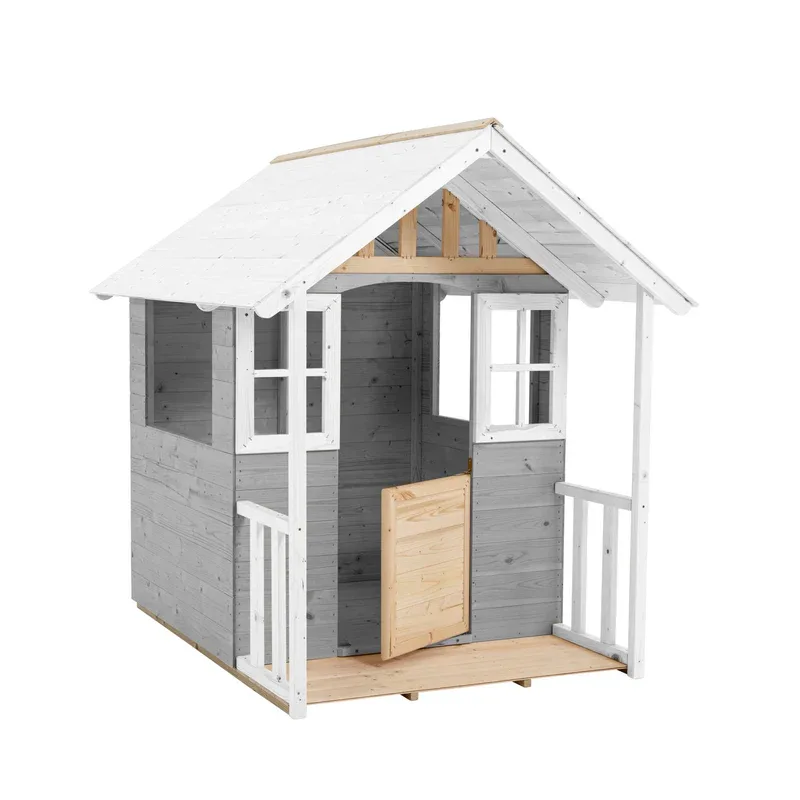In a world where screens are more accessible than ever, many parents find themselves battling to get their children outside and away from digital devices. With the lure of video games, streaming platforms, and endless apps, it can feel like an uphill battle. But there is a growing body of evidence that suggests children who spend more time outdoors benefit physically, emotionally, and socially. Whether it’s playing in a Maisonnette in the garden or heading to a local Aire de jeux, outdoor experiences can be just as exciting as anything on a screen. So, how can parents make the outdoors just as captivating as the digital world? The answer lies in creating engaging, imaginative, and accessible outdoor environments that spark curiosity and encourage active play.
The Importance of Outdoor Play
Before diving into strategies, it’s important to understand why outdoor play is so essential. Time spent outside promotes physical activity, which is crucial for healthy growth and development. Running, climbing, and jumping help improve coordination and strength. More than that, outdoor play supports mental wellbeing. It reduces stress, increases attention span, and enhances creativity. Socially, children learn how to interact with others, resolve conflicts, and work together. In contrast, too much screen time can contribute to sedentary behaviour, sleep disturbances, and even behavioural issues.
Make It a Daily Habit
One of the simplest yet most effective ways to shift the balance from screen time to green time is to make outdoor play a part of your child’s daily routine. This doesn’t always mean a trip to the park or a long nature walk. It could be something as simple as playing in the back garden, helping with gardening, or taking the dog for a walk. Consistency is key. When outdoor time becomes as regular as brushing teeth or having dinner, children come to expect and even look forward to it.
Design an Inviting Outdoor Space
You don’t need acres of land to make the outdoors appealing. Even a modest garden or patio can be transformed into an engaging play space. Consider investing in age-appropriate outdoor play equipment. A Maisonnette, for example, offers children a miniature home of their own, sparking hours of imaginative play. Pair it with a slide, a sandpit, or a climbing wall to keep the environment dynamic and fun.
If you have the space, an Aire de jeux – a dedicated play area with a mix of physical and creative elements – can be a game-changer. Think swings, balance beams, mud kitchens, and water play stations. These kinds of setups not only make the outdoors exciting but also encourage children to explore and invent their own games.
Get Involved
Children are more likely to engage in outdoor activities if parents and carers show enthusiasm. Join in the fun – build a den together, start a bug hunt, or have a scavenger hunt with items from nature. Your participation shows that outdoor play is valuable and enjoyable. Moreover, it provides an opportunity for quality family bonding, which helps children associate outdoor time with positive emotions.
Encourage Imaginative Play
The best outdoor spaces are those that fuel the imagination. Provide open-ended materials like sticks, stones, leaves, and fabric. Let your children turn a tree into a pirate ship or a log into a dragon. A small Maisonnette can be a bakery one day, a superhero headquarters the next. Imaginative play helps children develop problem-solving skills and emotional intelligence. It also keeps them coming back for more because the play possibilities are endless.
Balance Structure and Freedom
While structured activities like bike rides, sports, or nature crafts are beneficial, unstructured play is just as important. Give children the time and space to explore without a rigid agenda. Let them dig in the dirt, follow a trail, or simply lie in the grass and watch the clouds. When children feel they have control over their outdoor experiences, they are more likely to enjoy and seek out those experiences on their own.
Limit Screen Time – Without the Guilt
It’s unrealistic (and unnecessary) to ban screens altogether, especially since they can be a valuable educational tool. However, setting clear limits is crucial. Use tools like timers, app blockers, or screen time schedules. When screens are off, guide your children towards outdoor alternatives without making it feel like a punishment. The goal is not to demonise technology but to promote a balanced lifestyle where outdoor play has a firm place.
Tap into Community Resources
Local parks, woodlands, and community gardens are excellent for offering variety and a change of scenery. Many areas also have public Aire de jeux facilities with climbing frames, rope bridges, and sensory areas. Check community boards or social media groups for local outdoor events, from nature walks to treasure hunts. Engaging with the wider community gives children the chance to socialise and discover new environments.
Let the Weather Work for You
In Britain, the weather can be unpredictable, but that shouldn’t be a barrier. With the right clothing – waterproofs, wellies, sun hats – kids can play outside year-round. Rainy days are perfect for puddle jumping and mud pies. Windy days can be great for flying kites or blowing bubbles. Learning to enjoy the outdoors in all seasons builds resilience and a lasting appreciation for nature.
Celebrate Outdoor Achievements
Just as you might celebrate a high score on a game or a school achievement, celebrate outdoor milestones too. Did your child build a fort, identify a bird, or climb a new structure? Praise their creativity and bravery. You could even create a nature journal or photo scrapbook to track their adventures and inspire more.
Model the Behaviour
Children naturally mimic the adults around them. If they see you enjoying time outside – gardening, exercising, or simply relaxing with a book in the sun – they’ll be more inclined to do the same. Make outdoor time a shared family priority rather than a child-only activity.
Conclusion
In the age of digital saturation, it’s more important than ever to rekindle our children’s love for the outdoors. By making outdoor play accessible, engaging, and part of daily life, we can help our children develop healthier habits and a deeper connection with the world around them. From building a treehouse to exploring a local Aire de jeux, the possibilities are as vast as a child’s imagination. So unplug, step outside, and start creating memories that no screen can replace.











